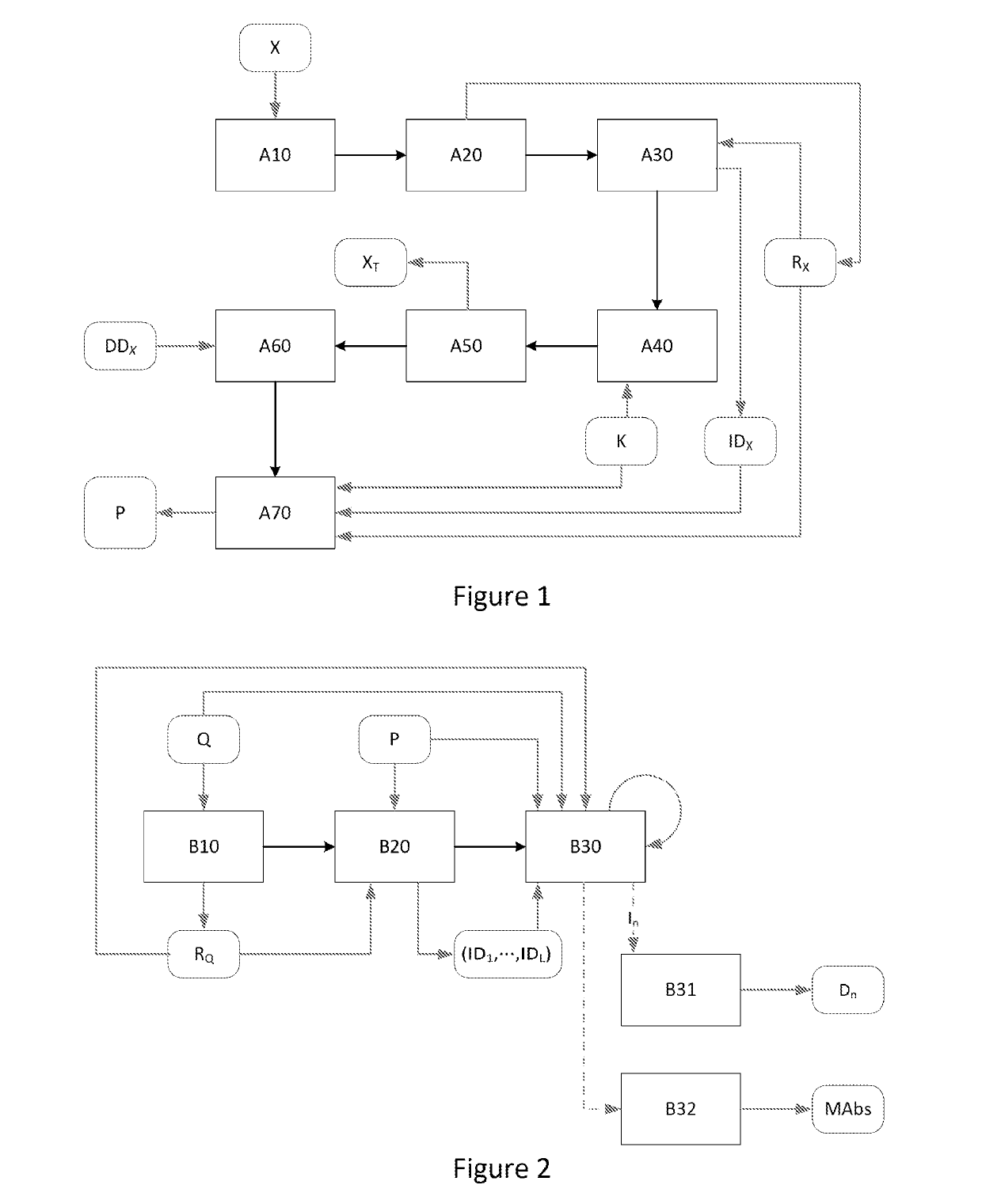This implementation of copyright is made even more difficult by changes in rights because a copyright can evolve in the course of time: a customer can for example negotiate an extension of the time of exploitation of a Work or a publisher may negotiate a use of the Work that is different from the originally planned use.
The problems presented by CBR operations are of two types:1) false positive and false negative: depending on the similarity between their representations, the
system must indicate whether the query corresponds to a copy of an image from the data base (i.e. the image that has the best similarity): this choice is generally resolved by comparing the similarity with a threshold; however, an excessively high threshold leads to more false negatives: the
system does not recognize deformed copies of the content of the data base; conversely, an excessively low threshold leads to a greater number of false positives: the system recognizes the queries although they do not correspond to any content of the data base; this problem becomes more critical as and when the number of contents managed in the data base increases; in addition, the system does not distinguish between two similar contents of data bases: for example, images of a same event taken by two photographers in proximity to each other are considered to be an identical content;2) multiple sources: a CBR system fails to extract accurate descriptive data when several versions of a same content exist, each with associated descriptive data: for example, when two photography agencies manage the copyright for a same image, the system identifies the Work but is incapable of specifying which version of the work is being identified, and is therefore unable to obtain accurate descriptive data corresponding to the version in question.
As explained here above, one problem of CBR is that it is unable to efficiently separate two different versions of a same content.
Digital watermarking also poses problems:1) the trade-off between
payload and robustness:
payload is defined as the length of incorporated message; for example, it is the number of bits encoding the message to be integrated; robustness is defined as the capacity given to the watermarking decoder to retrieve the incorporated message despite a modification of the watermarked content; one of the problems of watermarking is that there is a trade-off to be made between
payload and robustness: the lengthier the watermarked message, the less likely it is that the right message can be decoded after
distortion;2) robustness against geometrical attacks: taking the example of still-image watermarking: there are watermarking techniques that offer very high robustness against compression, filtering, calibration of colors or
noise; such modifications are called “volumetric”
processing since they modify the value of the pixels of the image; there are watermarking techniques that offer great robustness against geometrical attacks which modify the geometry of the image such as rotation,3) rescaling,
cropping; however, very few watermarking techniques withstand a combination of both types of attacks;4) the permanent nature of the message: another problem, for certain applications, is that the incorporated message cannot be easily modified; one solution is to retrieve the original content and insert a new
watermark into this original content; a second solution is to incorporate a second
watermark into an already watermarked content: this second solution impairs the perceptual quality of the content; in addition, at the decoding stage, it is not possible to tell which of the two images is the new one;5) problem of security: a
digital watermarking system needs a secret key: this is a secret parameter that is used during the watermarking and during the decoding: this parameter is not public and this prevents the reading, the modification or the erasure of the messages incorporated by unauthorized users; however, certain research work has shown that the levels of security in watermarking systems are low: this means that, by
processing several contents (of the order of 100) watermarked with the same technique and the same secret key but with different messages, an attacker can come into possession of the secret key.
 Login to View More
Login to View More  Login to View More
Login to View More 

